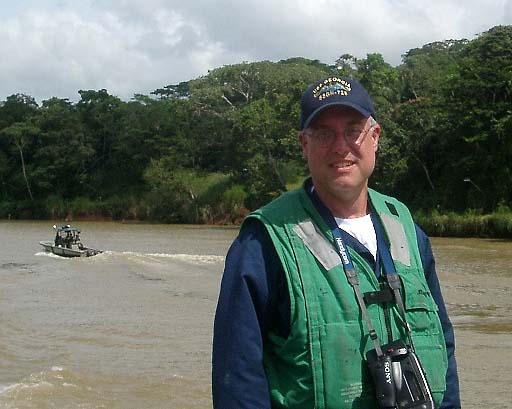Many websites, including the Wikipedia article linked above, say a lot about the height, weight, etc. of this statue. None of that does it justice. It is important to remember that, first of all, many people in Japan are still believers in Buddhism and this site is sacred to them. There is, in fact, a functioning Buddhist monastery which monks work to maintain the site.
The Kōtoku-in Monastery is a temple of the Jōdo-shū (Pure Land or Land of Ultimate Bliss) sect of Buddhaism. The idea is that the believer can attain the Pure Land (of Ultimate Bliss) by recitation of the name of the Amida Buddha.
The Daibutsu is not far from the ocean. It was cast of Bronze in 1252 and was housed in the Kōtoku-in temple. The temple, having been destroyed by storms and rebuilt twice, in 1334 and 1369, was washed away in the tsunami of September 20th, 1498. Since then the Daibutsu has been in the open air.
The Daibutsu and the monastery are in Kamakura just a short walk away from the Hase Station of the Enoden Line.
As one approaches the gate, the Buddha looms above.
The Daibutsu 大仏 dominates the grounds. (Yes, this used to be inside of a temple.)
In addition to being a religious site, it is a cultural site for the Japanese as a visit to Independence Hall is to an American. While I was there I was approached by no fewer that 4 groups of elementary school students who wanted to tell me (reading from a script provided by their school) that they are elementary school students studying English. They asked where I am from and wanted to take a picture with me. I presume that the picture is to provide proof to their teacher (I think that they all had the same teacher) that they completed their assignments. Here is a picture with the second group that approached me. This picture was taken by one of the kids from the group.
A side view.
There are also ancient monuments. Here is one.
For ¥20 you can go inside the statue. My pictures there did not turn out well as I am using only a (slightly better quality) pocket camera. Still, here is a shot from inside the statue looking up to where the head is attached. You can see the reenforcing that was installed during repairs to the statue that occurred in 1960.
The following is a plaque that is inside of the statue. It tells of some of the construction techniques used to build it.
The English text on the plaque reads (I have retained the original capitalization):
Construction Techniques Observable in the Inner Hollow of the Kamakura DaibutsuFor someone who loves History, in Kamakura and in much of the rest of Japan something incredible is just around the corner. I did not get an opportunity to visit the many other sites in this area. I did stop by the Hase-dera (see here and here) but did not go in due to the lateness of the hour (they had closed). I truly believed that I would be able to return, and I will, but it will a long time before I am able.
The Kamakura Daibutsu (Great Buddha of Kamakura) was built in the middle of the Kamakura Period, seven and a half centuries ago. Upon entering the inner hollow of the statue, one can observe the surprisingly sophisticated techniques that were used to create this statue. Due to its immense size, this statue was cast in 30 separate stages. The lattice pattern of the interior walls indicates that a large number of molds were placed on top of each other in layers. In order to securely connect together the separately cast pieces, a completely unique and ingenious method was employed connecting the pieces from the base to the top of the statue. Known as ikurakuri, this method can be broadly divided into three different types (see figure).
In 1960 a program was established by Kotoku-in temple to conduct major repairs of major cultural assets. Fortified plastic ERP was applied to the neck in order to reinforce the neck of the statue, and a stainless steel plate was inserted between the statue and the pedestal on which it rests as a means of protecting the statue against earthquakes.
じゃあね












No comments:
Post a Comment